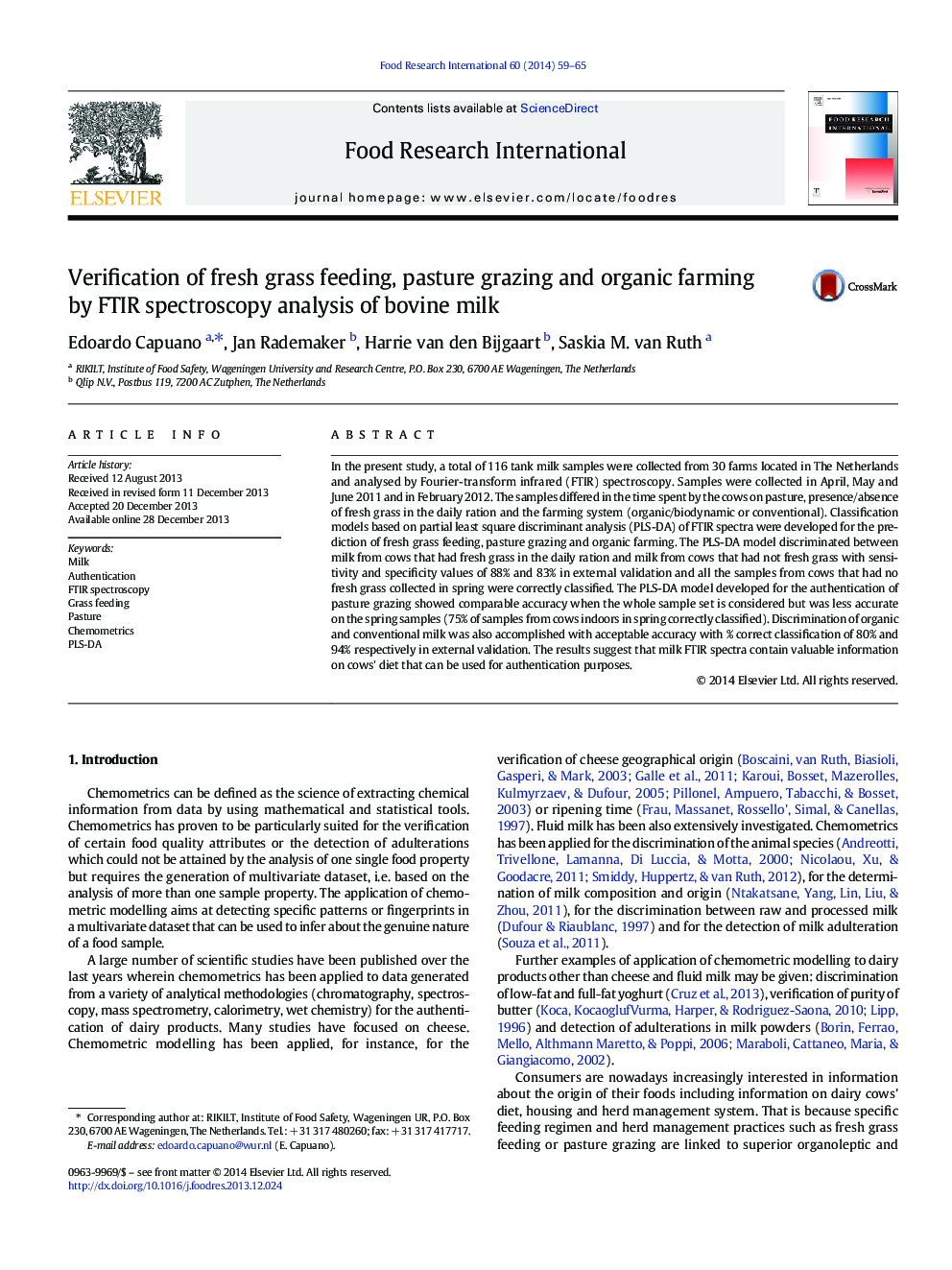| Article ID | Journal | Published Year | Pages | File Type |
|---|---|---|---|---|
| 6396469 | Food Research International | 2014 | 7 Pages |
Abstract
In the present study, a total of 116 tank milk samples were collected from 30 farms located in The Netherlands and analysed by Fourier-transform infrared (FTIR) spectroscopy. Samples were collected in April, May and June 2011 and in February 2012. The samples differed in the time spent by the cows on pasture, presence/absence of fresh grass in the daily ration and the farming system (organic/biodynamic or conventional). Classification models based on partial least square discriminant analysis (PLS-DA) of FTIR spectra were developed for the prediction of fresh grass feeding, pasture grazing and organic farming. The PLS-DA model discriminated between milk from cows that had fresh grass in the daily ration and milk from cows that had not fresh grass with sensitivity and specificity values of 88% and 83% in external validation and all the samples from cows that had no fresh grass collected in spring were correctly classified. The PLS-DA model developed for the authentication of pasture grazing showed comparable accuracy when the whole sample set is considered but was less accurate on the spring samples (75% of samples from cows indoors in spring correctly classified). Discrimination of organic and conventional milk was also accomplished with acceptable accuracy with % correct classification of 80% and 94% respectively in external validation. The results suggest that milk FTIR spectra contain valuable information on cows' diet that can be used for authentication purposes.
Related Topics
Life Sciences
Agricultural and Biological Sciences
Food Science
Authors
Edoardo Capuano, Jan Rademaker, Harrie van den Bijgaart, Saskia M. van Ruth,
